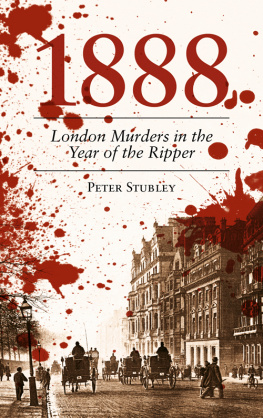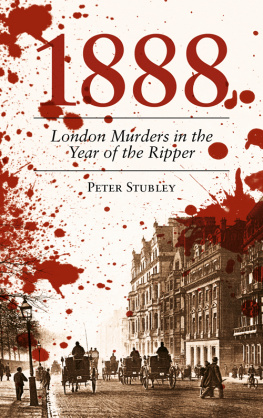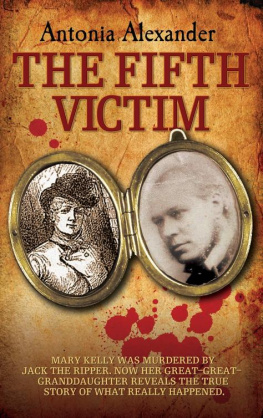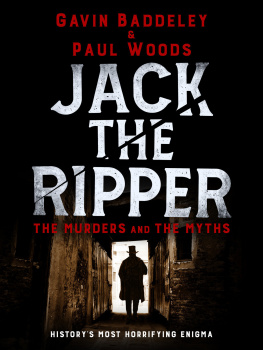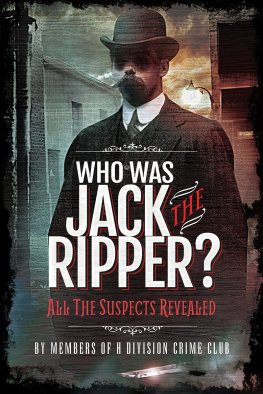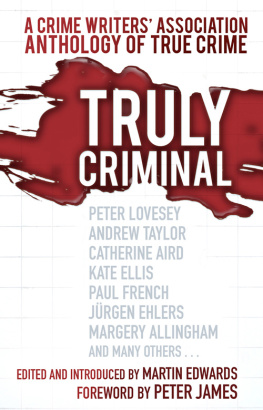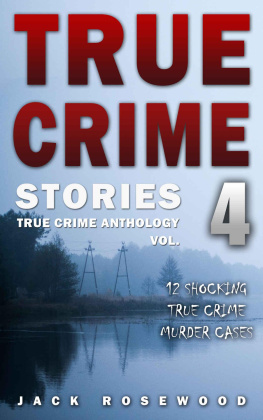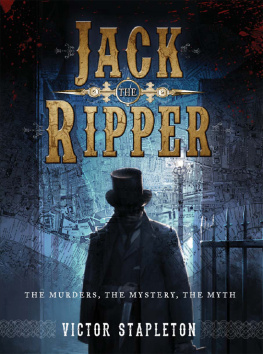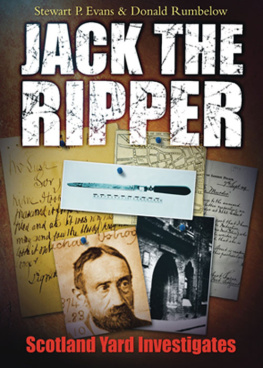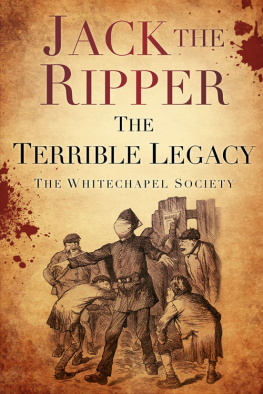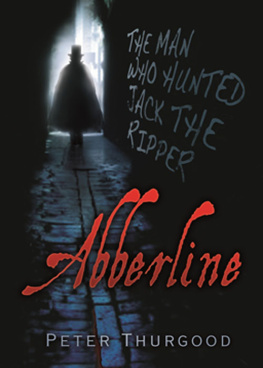
Contents
The Calendar of Crime covers nearly 1,000 years of British criminal history, from the assassination of King Edward the Martyr in 978 to the obscenity case over Lady Chatterleys Lover in 1960. It features many of the most notorious crimes during that period, ranging from pickpocketing to murder. There will no doubt be many omissions and in some cases no specific date could be found (such as the supposed trial for the murder of a statue of the Virgin Mary in Hawarden, Wales, in AD 946). The cut-off date of 1960 also means no mention of the Yorkshire Ripper, the Great Train Robbery and other modern crimes which are perhaps too fresh in the memory.
This book relies heavily on original newspaper accounts (available digitally via the British Library), the Newgate Calendar (available online at www.exclassics.com) and the Proceedings of the Old Bailey website. Many, many other books and websites have been a great help in identifying crimes worthy of inclusion and the relevant dates. Some limited examples: Brewers Rogues, Villains and Eccentrics , www.executedtoday.com, www.rictornorton.co.uk, the Murderers Whos Who by Gaute and Odell, The Criminal Recorder by A.F (1815), www.murderpedia.com, 501 Most Notorious Crimes by Paul Donnelly and The Book of Days by Robert Chambers.
On the evening of 1 January 1845, the electric telegraph operator at Paddington railway station received this message:
A MURDER HAS GUST BEEN COMMITTED
AT SALT HILL AND THE SUSPECTED
MURDERER WAS SEEN TO TAKE A
FIRST CLASS TICKET TO LONDON BY THE
TRAIN WHICH LEFT SLOUGH AT 7.42 PM
HE IS IN THE GARB OF A KWAKER
WITH A GREAT COAT ON WHICH REACHES
NEARLY DOWN TO HIS FEET HE IS
IN THE LAST COMPARTMENT OF
THE SECOND CLASS COMPARTMENT
The operator, not realising that Kwaker referred to Quaker (the system did not use J, Q or Z), asked for the communication to be repeated before passing it to police. By the time the train arrived at 8.20 p.m., a police officer was waiting to identify and follow the suspect. John Tawell, 60, was arrested and charged with the murder of his second wife Sarah Hart by poisoning her glass of stout with Scheeles Prussic Acid, a treatment for varicose veins which contained hydrogen cyanide. Tawell claimed his wife had inadvertently killed herself by eating too many apple pips but was convicted and sentenced to death. He became known as The Man Hanged by the Electric Telegraph.
The MP and baronet Sir John Hotham was beheaded on this day in 1645 after making the mistake of defying both the king and Parliament during the English Civil War. He was first declared a traitor after barring Charles I from entering Hull to make use of its stockpile of weapons in April 1642, forcing the king to move to Nottingham. Hotham then seems to have had a disastrous change of heart as the Royalists initially got the better of the early exchanges with the Parliamentarian forces. Together with his eldest son Captain John Hotham the younger, who served under Thomas Fairfax he began secret negotiations to hand over the Hull stronghold to the Royalists. The deception was discovered and Parliament ordered the arrest of both Hothams in June 1643. Sir John attempted to escape but was arrested in Beverley in Yorkshire and taken to London for court martial. Both Sir John and his son (who blamed his father for the betrayal) were convicted of treason and executed on successive days at Tower Hill. According to one account, Sir Johns unwillingness to die appeared by his many delays and no doubt but that he had thoughts of pardon till the last.

The Siege of Sidney Street in the East End of London in 1911 pitted two Latvian anarchists against 200 police officers, a company of Scots Guards and Home Secretary Winston Churchill. The Latvians were believed to be responsible for the murder of three policemen in Houndsditch two weeks earlier on 16 December and detectives had received a tip-off that the gang was hiding out at No. 100 Sidney Street. At 2 a.m., the building was surrounded by armed officers. For the next six hours gunfire echoed around the street until the hideout mysteriously caught fire. Churchill, who was famously photographed peering around a corner at the battle, ordered the firefighters not to intervene and, when the blaze died down, two bodies were recovered. Neither of them was the legendary Peter the Painter, the supposed leader of the gang. Nobody knows his true identity or if he even existed at all. As for Churchill, the future war leader was widely mocked in Parliament for risking his life and taking control of the operation. He would later admit in his diaries that curiosity got the better of him: I should have done better to have remained quietly in my office.
English history might have been very different if King Charles I had not attempted to arrest five MPs for treason on this day in 1642. Seeking to impose his royal authority, Charles marched into the House of Commons with armed soldiers only to find that the troublesome Five Members John Pym, John Hampden, Denzil Holles, Arthur Haselrig and William Strode had already left. Taking the Speakers chair, Charles told the remaining MPs: So long as those persons that I have accused are here, I cannot expect that this House will be in the right way I do heartily wish it. When he asked Speaker William Lenthall if he knew where the five men were, the Speaker (on bended knee) defiantly replied: I have neither eyes to see nor tongue to speak in this place but as this House is pleased to direct me. After a long silence, the king replied: Well, since I see all my birds are flown I do expect from you that you will send them unto me as soon as they return hither. Six days later, Charles fled from London for his own safety and began to prepare for the outbreak of the Civil War.
Ten-year-old Mona Tinsley left school in Newark in Nottinghamshire at 4 p.m. on 5 January 1937. She never arrived home. By 9 p.m., a full police search was underway. There were several sightings: a schoolboy saw Mona with a man at the bus station, a bus driver reported that a man and a girl travelled on the 4.45 p.m. to Retford, and at Retford there was a sighting of a young girl in the back garden of the home of Frederick Nodder. Another witness had seen Nodder a former lodger with the Tinsley family waiting outside the school in Newark. At Nodders house, police found drawings and writing by Mona. But there was no sign of the girl. With no body to prove murder, Nodder was charged with abduction and jailed for seven years at Warwick Assizes. The judge told him: it may be that time will reveal the dreadful secret which you carry in your breast. Five months later, a family rowing in the River Idle discovered Monas body floating in the water. Nodder, who claimed he had put Mona on a bus to Sheffield, was convicted of murder at Nottingham Assizes. He was hanged on 30 December 1937.
Evelyn Foster was dying. As she lay in bed, her body so badly burnt it was obvious she had only hours to live, she told her story: on the evening of 6 January 1931, she was driving a Hudson Super Six taxi back to her fathers garage in Otterburn, Northumberland, when she was flagged down by a smart man in a bowler hat. She agreed to take him to Ponteland, but he took over the wheel, knocked her unconscious and indecently assaulted her. Then he set the car on fire. She managed to clamber away from the vehicle and was found a short while later by a passing bus driver. Evelyn died the following morning, aged 27. Nobody was ever charged and the police seem to have dismissed her version of events. At the inquest, the jury were provided with two alternative theories: either Evelyn was murdered by this mysterious stranger, or she accidentally set herself on fire as well as the car, perhaps in order to claim on the insurance. Although a post-mortem found no evidence of an assault, the jury returned a verdict of wilful murder. So who was the dandy in the bowler hat?
Next page

